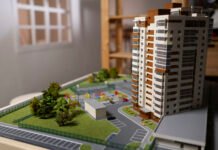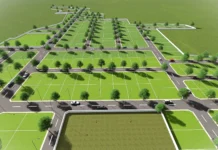Delhi, a city that skilfully combines modern urbanization with its rich historical history, has seen notable changes in the real estate market, especially in plot development. These success stories demonstrate the city’s explosive expansion while also serving as excellent case studies for sustainable development, innovative urban design, and urban innovation. Here are a few noteworthy instances of successful plot development in Delhi.
Gurugram’s DLF Cyber City:
DLF Cyber City is not officially in Delhi proper, but it is part of the National Capital Region (NCR), and its growth has had a big impact on the whole area. This development used to be an ordinary plot of land, but it has now grown into a thriving business center. DLF Cyber City is a classic example of successful plot development, drawing in many international firms with its strategic focus on building an integrated business ecosystem.
Cyber City’s extensive infrastructure, which includes cutting-edge office buildings, a dependable power supply, and first-rate connectivity via the Delhi Metro and national highways, is the secret to its success. Its allure was further increased with the addition of smart city features, including automated traffic management systems and green building techniques. This change has not only strengthened the local economy but also established a standard for initiatives of a similar nature in the area.
Sub-City of Rohini:
Rohini, one of Delhi’s first planned residential sub-cities, was created by the Delhi Development Authority (DDA). With careful planning and ongoing development efforts, Rohini—which was formerly an undeveloped area—has grown into a thriving residential and commercial center.
Several things have contributed to Rohini’s success:
Strategic Planning: By building the area gradually, a methodical approach to resource allocation and infrastructure development was used.
Connectivity: More people and businesses moved to Rohini as a result of the Delhi Metro’s major accessibility improvement.
Amenities: Rohini’s well-planned parks, schools, hospitals, and retail centres have made it a popular place for both families and professionals to live.
The success of thoughtful urban planning and infrastructure is demonstrated by Rohini’s transition from desolate plots to a bustling sub-city.
Sub-City of Dwarka:
One of the biggest residential districts in Asia is Dwarka, another sub-city created by the DDA. Formerly a vast tract of undeveloped ground, Dwarka has transformed into a well-managed township renowned for its broad roads, copious green areas, and state-of-the-art infrastructure.
Important factors that have aided Dwarka’s prosperity include the following:
Planned Development: A balanced distribution of residential, commercial, and recreational spaces is guaranteed by Dwarka’s sector-based design.
Transport Infrastructure: Residents now find it easy to commute because of the strong road networks and excellent connections provided by the Delhi Metro.
Sustainable Practices: By encouraging sustainable living, projects like rainwater collection and solar power integration have increased the area’s appeal.
Conclusion: The achievements of DLF Cyber City, Rohini, and Dwarka demonstrate the possibilities of thoughtfully designed 50-100-200 Gaj Plots development in Delhi. These illustrations show how important it is to use sustainable practices, infrastructure development, and strategic planning to turn undeveloped land into vibrant urban centres. These success stories guarantee that Delhi stays a vibrant and sustainable metropolis as the city expands by providing invaluable models for upcoming projects.






